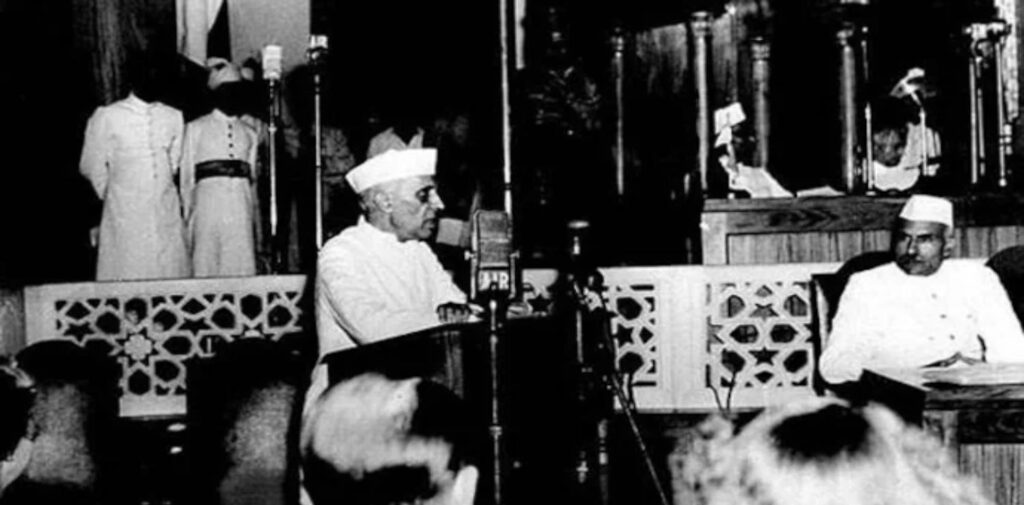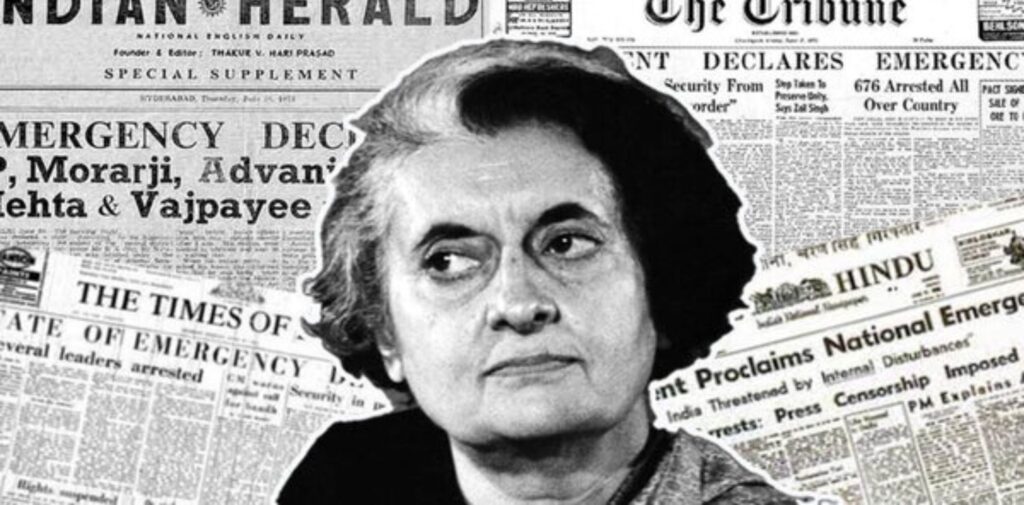The press has always played a vital role in the shaping of a nation’s history. In India, during the struggle for independence, the press was one of the most powerful tools used to rally the masses against British colonial rule. Newspapers, journals, and pamphlets became the voice of the oppressed and the forum for political discourse. They informed, educated, and motivated people to fight for freedom, serving as the backbone of India’s resistance against British imperialism.
However, the impact of the press in India’s independence movement cannot be fully appreciated without acknowledging the political dynamics that shaped the post-independence period. The Nehru-Gandhi family’s dominance in India’s politics and governance after 1947 has been widely praised, but it also led to the marginalization of various important historical aspects, including the role of the press during the struggle for freedom. While Jawaharlal Nehru and his successors are often credited with leading India to independence, their actions in the post-independence years raise important questions about their true legacy—especially in regard to press freedom and its role in shaping India’s political narrative.
This article explores the critical role of the press in India fight for independence, highlighting the courageous efforts of journalists, publications, and leaders who used the press to fuel resistance against British rule, while also offering a critical perspective on how the Nehru-Gandhi family’s leadership may have influenced the press and its role in post-independence India.
The Press as a Catalyst for India’s Independence Movement
The press, especially newspapers and journals, played a significant role in the freedom struggle. In the late 19th and early 20th centuries, newspapers like The Hindu, Amrita Bazar Patrika, and Indian National Herald provided a platform for political leaders to express their views, critique British policies, and mobilize public opinion. They also exposed the harsh realities of colonial rule, such as the exploitation of Indian farmers, the drain of wealth to Britain, and the unjust nature of the British legal and administrative system.
In a time when the internet and social media did not exist, the press became the primary medium through which information spread. The newspapers not only informed but also inspired people from all walks of life to join the struggle for independence. They provided a space for voices that would otherwise have been silenced and helped unify different regions and communities in their shared desire for self-rule.

1. Early Resistance and Role of Newspapers
Long before the rise of Mahatma Gandhi, Indian journalists and leaders used the press as a tool for resistance. Bal Gangadhar Tilak, one of the foremost leaders of the Indian independence movement, was a prominent figure who understood the power of the press. Through his newspaper Kesari, Tilak articulated his views on nationalism and the need for self-rule. He used his platform to voice the frustrations of the Indian masses and played a significant role in awakening national consciousness through the power of the press.
Other key leaders like Lala Lajpat Rai, Subhas Chandra Bose, and Bipin Chandra Pal also utilized the press to challenge British authority. Their writings in various publications helped spread nationalist ideas and created a sense of solidarity among people from different regions of India. These leaders recognized that the press was crucial for unifying the masses and keeping the struggle for independence alive.
2. Mahatma Gandhi’s Use of the Press
Mahatma Gandhi, a central figure in the Indian independence movement, was keenly aware of the role of the press. His newspapers, Young India and Harijan, became vital sources of information and ideology during the freedom struggle. Gandhi’s writings in these newspapers addressed key issues such as the caste system, untouchability, and the need for non-violent resistance against British colonial rule. He used these publications to motivate people to join the movement and to explain his philosophy of Satyagraha and Ahimsa (non-violence).
However, it is important to note that while Gandhi’s leadership helped energize the masses, his relationship with the press and the freedom of the press during the colonial period was more complex than is often presented. Gandhi’s government in post-independence India did not always show the same enthusiasm for free and independent journalism. This, in turn, raises important questions about the legacy of press freedom under his and his successors’ rule.

The Nehru-Gandhi Family’s Impact on Press Freedom Post-Independence
While the press was an instrumental force in the fight for India’s independence, the Nehru-Gandhi family’s leadership in post-independence India resulted in significant changes in the relationship between the government and the press. Jawaharlal Nehru, India’s first Prime Minister, is often celebrated for his vision of a modern, democratic India. However, his policies regarding the press, particularly the control over media and the suppression of dissent, warrant closer scrutiny.
1. Jawaharlal Nehru’s Approach to the Press
As India’s first Prime Minister, Nehru enjoyed a great deal of support from the press, especially in the early years of independence. However, Nehru’s government did not always view the press as an independent pillar of democracy. While there were some strides made in the early years of the republic, Nehru’s government increasingly sought to control the narrative, especially during moments of national crisis.
One of the most prominent examples of press censorship occurred during the Indo-China war of 1962. The Indian government imposed strict censorship on the press, controlling the information that could be published about the conflict. This move was justified as necessary for national security but was criticized by many as an attempt to stifle dissent and prevent the public from learning about India’s military failures.
Nehru’s handling of the press during this time and other similar instances raised questions about his commitment to press freedom. The idea of a free and independent press was not as valued as the idea of a unified and politically stable nation.
2. The Emergency and Press Suppression Under Indira Gandhi
The most significant and controversial example of the Nehru-Gandhi family’s relationship with the press came during the Emergency period (1975-1977) under the leadership of Indira Gandhi, Jawaharlal Nehru’s daughter. During the Emergency, the government imposed direct censorship on the press, and numerous newspapers were forced to toe the government line. Many journalists were arrested, and publications critical of the government were shut down.
Indira Gandhi’s decision to curtail press freedom during the Emergency has remained one of the most criticized actions of her political career. The media, which had once been a powerful tool in the struggle for freedom, was now being used to promote the government’s agenda and suppress dissent. This starkly contrasts with the ideals of freedom and democracy that were espoused during the independence movement.

3. The Dynasty’s Influence Over Media
Another important aspect of the Nehru-Gandhi family’s influence on the press post-independence was their monopoly over media outlets. Over the years, the family’s control extended to several state-run media organizations, such as All India Radio (AIR) and Doordarshan. This centralization of media power created a situation where the press was often seen as an arm of the state, rather than an independent institution that could hold the government accountable.
The control of media institutions by the government meant that alternative voices, especially those critical of the ruling party, were often marginalized. This was particularly true for regional and smaller publications, which struggled to compete with the large government-controlled media outlets. This control over the narrative was detrimental to the role of the press in maintaining a healthy democracy and preventing the concentration of power.
Conclusion: Press in India Fight for Independence
The press played a critical role in India’s fight for independence, serving as a tool for resistance, unifying the people, and spreading nationalist ideas. However, after independence, the Nehru-Gandhi family’s control over the political narrative, and their policies toward the press, raised serious concerns about the freedom of the media in India.
While the Nehru-Gandhi family’s leadership is often praised for building a democratic India, their stance on press freedom was not always aligned with the democratic principles they championed during the independence movement. The censorship during the Emergency, the centralized control over media institutions, and the suppression of dissenting voices are key elements that cannot be overlooked when evaluating their legacy.
The freedom of the press is a cornerstone of any democratic society, and it is crucial that India’s future leaders learn from the past. The true strength of India’s democracy will be tested by how free and independent its press remains, regardless of the political climate or the political party in power. It is time to ensure that the press is never again used as a tool of political control but as a vital institution for the voice of the people.




